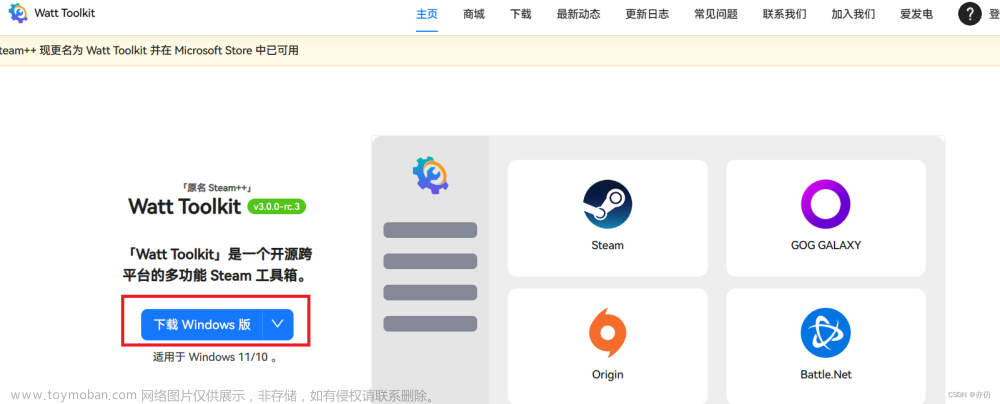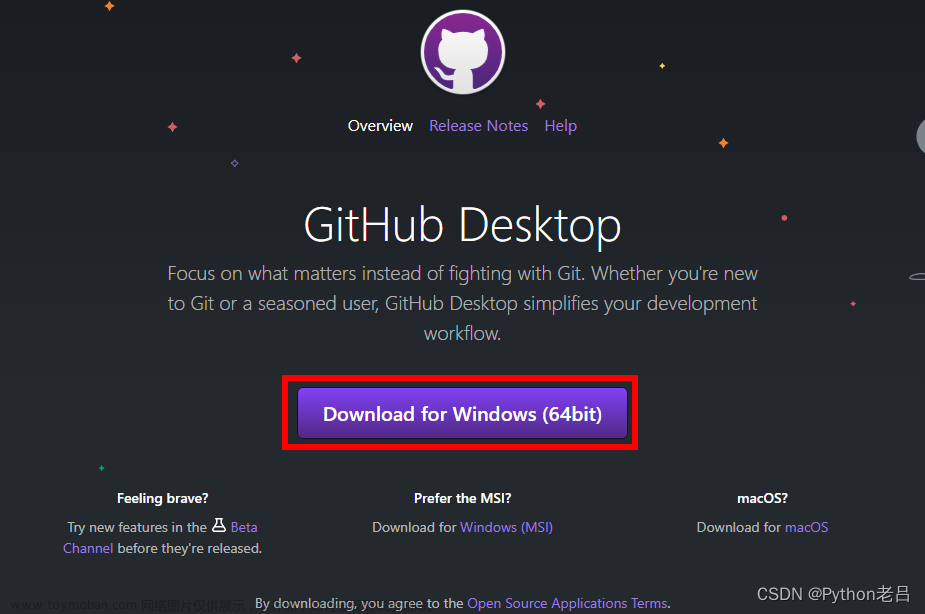如何使用cloudsim?
直接上github搜索cloudsim
Release cloudsim-3.0 · Cloudslab/cloudsim · GitHub
首先来个源代码,这个是cloudsimexample1
package org.cloudbus.cloudsim.examples;
/*
* Title: CloudSim Toolkit
* Description: CloudSim (Cloud Simulation) Toolkit for Modeling and Simulation
* of Clouds
* Licence: GPL - http://www.gnu.org/copyleft/gpl.html
*
* Copyright (c) 2009, The University of Melbourne, Australia
*/
import java.text.DecimalFormat;
import java.util.ArrayList;
import java.util.Calendar;
import java.util.LinkedList;
import java.util.List;
import org.cloudbus.cloudsim.Cloudlet;
import org.cloudbus.cloudsim.CloudletSchedulerTimeShared;
import org.cloudbus.cloudsim.Datacenter;
import org.cloudbus.cloudsim.DatacenterBroker;
import org.cloudbus.cloudsim.DatacenterCharacteristics;
import org.cloudbus.cloudsim.Host;
import org.cloudbus.cloudsim.Log;
import org.cloudbus.cloudsim.Pe;
import org.cloudbus.cloudsim.Storage;
import org.cloudbus.cloudsim.UtilizationModel;
import org.cloudbus.cloudsim.UtilizationModelFull;
import org.cloudbus.cloudsim.Vm;
import org.cloudbus.cloudsim.VmAllocationPolicySimple;
import org.cloudbus.cloudsim.VmSchedulerTimeShared;
import org.cloudbus.cloudsim.core.CloudSim;
import org.cloudbus.cloudsim.provisioners.BwProvisionerSimple;
import org.cloudbus.cloudsim.provisioners.PeProvisionerSimple;
import org.cloudbus.cloudsim.provisioners.RamProvisionerSimple;
/**
* A simple example showing how to create a datacenter with one host and run one
* cloudlet on it.
*/
public class CloudSimExample1 {
/** The cloudlet list. */
private static List<Cloudlet> cloudletList;
/** The vmlist. */
private static List<Vm> vmlist;
/**
* Creates main() to run this example.
*
* @param args the args
*/
public static void main(String[] args) {
Log.printLine("Starting CloudSimExample1...");
try {
// First step: Initialize the CloudSim package. It should be called
// before creating any entities.
int num_user = 1; // number of cloud users
Calendar calendar = Calendar.getInstance();
boolean trace_flag = false; // mean trace events
// Initialize the CloudSim library
CloudSim.init(num_user, calendar, trace_flag);
// Second step: Create Datacenters
// Datacenters are the resource providers in CloudSim. We need at
// list one of them to run a CloudSim simulation
Datacenter datacenter0 = createDatacenter("Datacenter_0");
// Third step: Create Broker
DatacenterBroker broker = createBroker();
int brokerId = broker.getId();
// Fourth step: Create one virtual machine
vmlist = new ArrayList<Vm>();
// VM description
int vmid = 0;
int mips = 1000;
long size = 10000; // image size (MB)
int ram = 512; // vm memory (MB)
long bw = 1000;
int pesNumber = 1; // number of cpus
String vmm = "Xen"; // VMM name
// create VM
Vm vm = new Vm(vmid, brokerId, mips, pesNumber, ram, bw, size, vmm, new CloudletSchedulerTimeShared());
// add the VM to the vmList
vmlist.add(vm);
// submit vm list to the broker
broker.submitVmList(vmlist);
// Fifth step: Create one Cloudlet
cloudletList = new ArrayList<Cloudlet>();
// properties
int id = 0;
long length = 400000;
long fileSize = 300;
long outputSize = 300;
UtilizationModel utilizationModel = new UtilizationModelFull();
Cloudlet cloudlet = new Cloudlet(id, length, pesNumber, fileSize, outputSize, utilizationModel, utilizationModel, utilizationModel);
cloudlet.setUserId(brokerId);
cloudlet.setVmId(vmid);
// add the cloudlet to the list
cloudletList.add(cloudlet);
// submit cloudlet list to the broker
broker.submitCloudletList(cloudletList);
// Sixth step: Starts the simulation
CloudSim.startSimulation();
CloudSim.stopSimulation();
//Final step: Print results when simulation is over
List<Cloudlet> newList = broker.getCloudletReceivedList();
printCloudletList(newList);
// Print the debt of each user to each datacenter
datacenter0.printDebts();
Log.printLine("CloudSimExample1 finished!");
} catch (Exception e) {
e.printStackTrace();
Log.printLine("Unwanted errors happen");
}
}
/**
* Creates the datacenter.
*
* @param name the name
*
* @return the datacenter
*/
private static Datacenter createDatacenter(String name) {
// Here are the steps needed to create a PowerDatacenter:
// 1. We need to create a list to store
// our machine
List<Host> hostList = new ArrayList<Host>();
// 2. A Machine contains one or more PEs or CPUs/Cores.
// In this example, it will have only one core.
List<Pe> peList = new ArrayList<Pe>();
int mips = 1000;
// 3. Create PEs and add these into a list.
peList.add(new Pe(0, new PeProvisionerSimple(mips))); // need to store Pe id and MIPS Rating
// 4. Create Host with its id and list of PEs and add them to the list
// of machines
int hostId = 0;
int ram = 2048; // host memory (MB)
long storage = 1000000; // host storage
int bw = 10000;
hostList.add(
new Host(
hostId,
new RamProvisionerSimple(ram),
new BwProvisionerSimple(bw),
storage,
peList,
new VmSchedulerTimeShared(peList)
)
); // This is our machine
// 5. Create a DatacenterCharacteristics object that stores the
// properties of a data center: architecture, OS, list of
// Machines, allocation policy: time- or space-shared, time zone
// and its price (G$/Pe time unit).
String arch = "x86"; // system architecture
String os = "Linux"; // operating system
String vmm = "Xen";
double time_zone = 10.0; // time zone this resource located
double cost = 3.0; // the cost of using processing in this resource
double costPerMem = 0.05; // the cost of using memory in this resource
double costPerStorage = 0.001; // the cost of using storage in this
// resource
double costPerBw = 0.0; // the cost of using bw in this resource
LinkedList<Storage> storageList = new LinkedList<Storage>(); // we are not adding SAN
// devices by now
DatacenterCharacteristics characteristics = new DatacenterCharacteristics(
arch, os, vmm, hostList, time_zone, cost, costPerMem,
costPerStorage, costPerBw);
// 6. Finally, we need to create a PowerDatacenter object.
Datacenter datacenter = null;
try {
datacenter = new Datacenter(name, characteristics, new VmAllocationPolicySimple(hostList), storageList, 0);
} catch (Exception e) {
e.printStackTrace();
}
return datacenter;
}
// We strongly encourage users to develop their own broker policies, to
// submit vms and cloudlets according
// to the specific rules of the simulated scenario
/**
* Creates the broker.
*
* @return the datacenter broker
*/
private static DatacenterBroker createBroker() {
DatacenterBroker broker = null;
try {
broker = new DatacenterBroker("Broker");
} catch (Exception e) {
e.printStackTrace();
return null;
}
return broker;
}
/**
* Prints the Cloudlet objects.
*
* @param list list of Cloudlets
*/
private static void printCloudletList(List<Cloudlet> list) {
int size = list.size();
Cloudlet cloudlet;
String indent = " ";
Log.printLine();
Log.printLine("========== OUTPUT ==========");
Log.printLine("Cloudlet ID" + indent + "STATUS" + indent
+ "Data center ID" + indent + "VM ID" + indent + "Time" + indent
+ "Start Time" + indent + "Finish Time");
DecimalFormat dft = new DecimalFormat("###.##");
for (int i = 0; i < size; i++) {
cloudlet = list.get(i);
Log.print(indent + cloudlet.getCloudletId() + indent + indent);
if (cloudlet.getCloudletStatus() == Cloudlet.SUCCESS) {
Log.print("SUCCESS");
Log.printLine(indent + indent + cloudlet.getResourceId()
+ indent + indent + indent + cloudlet.getVmId()
+ indent + indent
+ dft.format(cloudlet.getActualCPUTime()) + indent
+ indent + dft.format(cloudlet.getExecStartTime())
+ indent + indent
+ dft.format(cloudlet.getFinishTime()));
}
}
}
}
这个代码的目的是创造一个主机,一个任务的数据中心
但是第一次看到这个肯定看的云里雾里的,下面就来先分析一下这些玩意是干什么的。
-
Datacenter,顾名思义就是数据中心 -
DatacenterBroker,这个是数据中心代理,负责云计算中根据用户的qos要求协调用户以及服务供应商,以后vm绑定数据中心,还有cloudlet绑定数据中心,以及vm绑定cloudlet都和这个broker有关 -
Cloudlet,这个是指令,有四个属性int id = 0;就是指令的id long length = 40000;指令的长度 long fileSize = 300;文件的大小 long outputSize = 300;输出的大小 -
UtilizationModel,在构造cloudlet的时候,这个是必须的,是一个应用的模型
流程分析

-
首先是cloudsim的初始化,需要三个参数CloudSim.init(num_user, calendar, trace_flag),分别是云用户的数量,日期,还有是否跟踪事件。
-
第二部开始构建数据中心,这里的实例有一个代码
private static Datacenter createDatacenter(String name) { // Here are the steps needed to create a PowerDatacenter: // 1. We need to create a list to store // our machine //使用一个list来存放我们的主机 List<Host> hostList = new ArrayList<Host>(); // 2. A Machine contains one or more PEs or CPUs/Cores. // In this example, it will have only one core. List<Pe> peList = new ArrayList<Pe>(); //一个主机有多个pes或者是cpu //mips就是单位时间处理命令的量 int mips = 1000; // 3. Create PEs and add these into a list. //创建pes并且加入到list里面 peList.add(new Pe(0, new PeProvisionerSimple(mips))); // need to store Pe id and MIPS Rating // 4. Create Host with its id and list of PEs and add them to the list // of machines int hostId = 0; int ram = 2048; // host memory (MB)主机内存 long storage = 1000000; // host storage应该是外存 int bw = 10000;//带宽 hostList.add( new Host( hostId, new RamProvisionerSimple(ram), new BwProvisionerSimple(bw), storage, peList, new VmSchedulerTimeShared(peList)虚拟机的时间共享分配策略 ) ); // This is our machine // 5. Create a DatacenterCharacteristics object that stores the // properties of a data center: architecture, OS, list of // Machines, allocation policy: time- or space-shared, time zone // and its price (G$/Pe time unit). String arch = "x86"; // system architecture String os = "Linux"; // operating system String vmm = "Xen"; double time_zone = 10.0; // time zone this resource located double cost = 3.0; // the cost of using processing in this resource double costPerMem = 0.05; // the cost of using memory in this resource double costPerStorage = 0.001; // the cost of using storage in this // resource double costPerBw = 0.0; // the cost of using bw in this resource LinkedList<Storage> storageList = new LinkedList<Storage>(); // we are not adding SAN // devices by now DatacenterCharacteristics characteristics = new DatacenterCharacteristics( arch, os, vmm, hostList, time_zone, cost, costPerMem, costPerStorage, costPerBw); // 6. Finally, we need to create a PowerDatacenter object. Datacenter datacenter = null; try { datacenter = new Datacenter(name, characteristics, new VmAllocationPolicySimple(hostList), storageList, 0); } catch (Exception e) { e.printStackTrace(); } return datacenter; } -
创建虚拟中心代理
-
创建虚拟机
-
创建云任务,设定任务数量
-
分配任务到虚拟机上文章来源:https://www.toymoban.com/news/detail-452995.html
-
启动仿真文章来源地址https://www.toymoban.com/news/detail-452995.html
到了这里,关于Cloudsim入门的文章就介绍完了。如果您还想了解更多内容,请在右上角搜索TOY模板网以前的文章或继续浏览下面的相关文章,希望大家以后多多支持TOY模板网!












